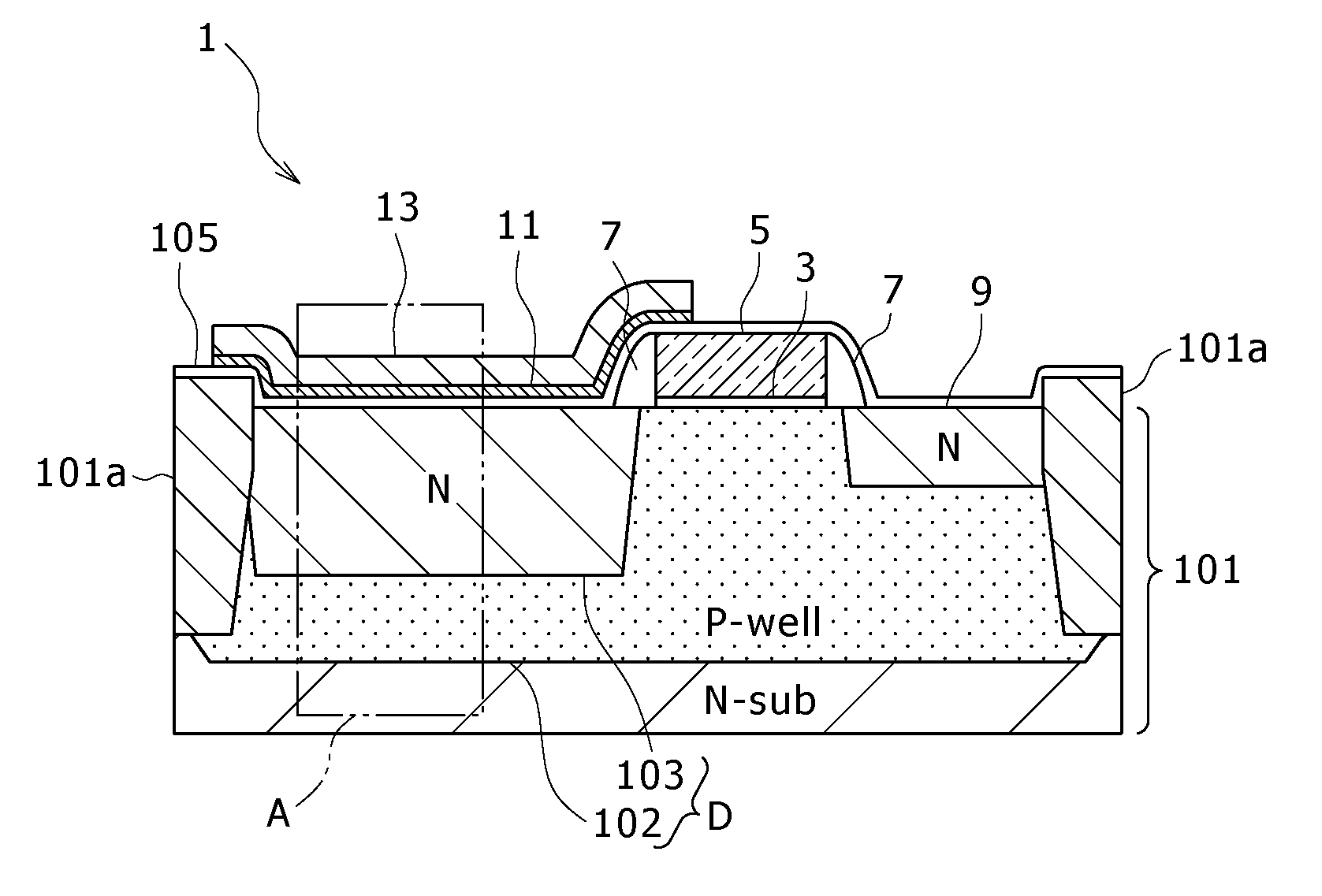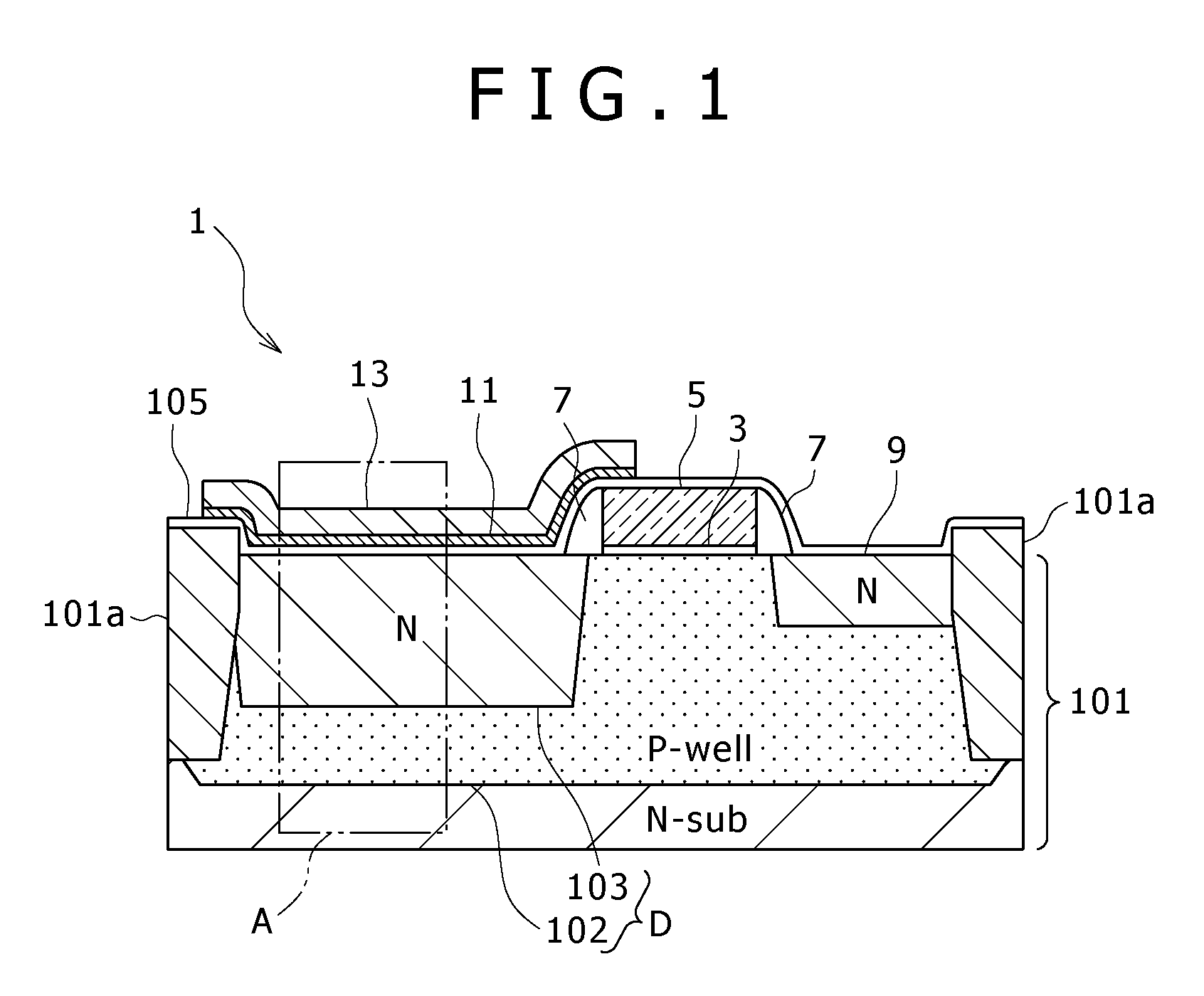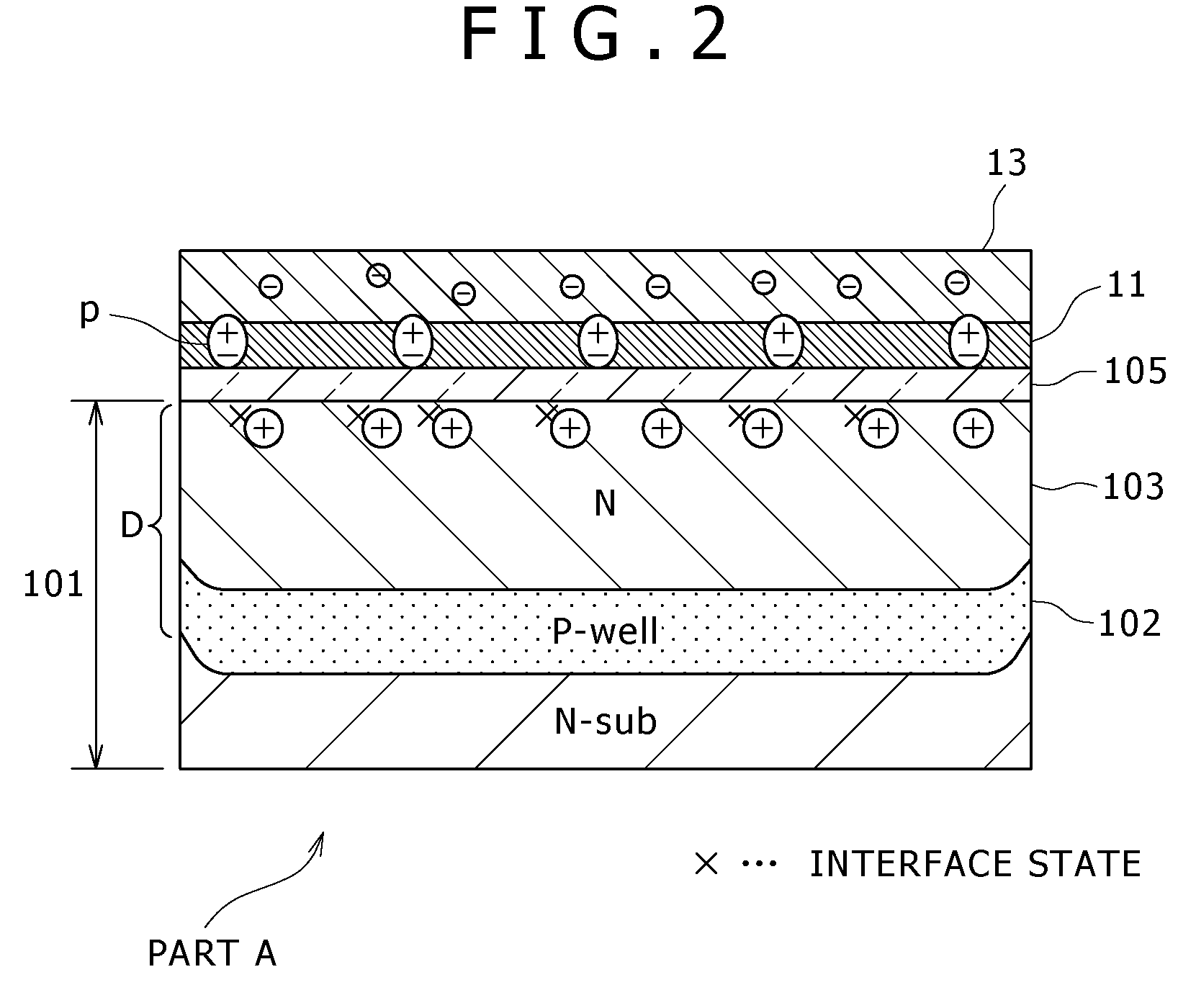Solid-state imaging device
a solid-state imaging and imaging layer technology, applied in the direction of radiation control devices, semiconductor devices, electrical apparatus, etc., can solve the problem of impurity diffusion in previously formed impurity layers
- Summary
- Abstract
- Description
- Claims
- Application Information
AI Technical Summary
Benefits of technology
Problems solved by technology
Method used
Image
Examples
Embodiment Construction
[0023]The following is a detailed description of the solid-state imaging device according to an embodiment of the present invention shown in the accompanying drawings, in which the same constituents as in FIG. 4 are given the same symbols.
[0024]FIG. 1 is a sectional view showing important parts of a solid-state imaging device 1 according to the embodiment of the present invention. The solid-state imaging device 1 contains a CMOS sensor, and the figure represents the sensor for one pixel. FIG. 2 is an enlarged view showing part A in FIG. 1. As shown in these figures, the solid-state imaging device 1 is one which contains a sensor of HAD structure and is constructed as follows.
[0025]The semiconductor substrate 101 is formed from N-type single-crystal silicon. It is divided into individual pixel regions by the shallow trench isolation (STI) 101a. That part of the semiconductor substrate 101 which corresponds to each pixel region divided by the isolation 101a has the P-well diffusion la...
PUM
 Login to View More
Login to View More Abstract
Description
Claims
Application Information
 Login to View More
Login to View More - R&D
- Intellectual Property
- Life Sciences
- Materials
- Tech Scout
- Unparalleled Data Quality
- Higher Quality Content
- 60% Fewer Hallucinations
Browse by: Latest US Patents, China's latest patents, Technical Efficacy Thesaurus, Application Domain, Technology Topic, Popular Technical Reports.
© 2025 PatSnap. All rights reserved.Legal|Privacy policy|Modern Slavery Act Transparency Statement|Sitemap|About US| Contact US: help@patsnap.com



